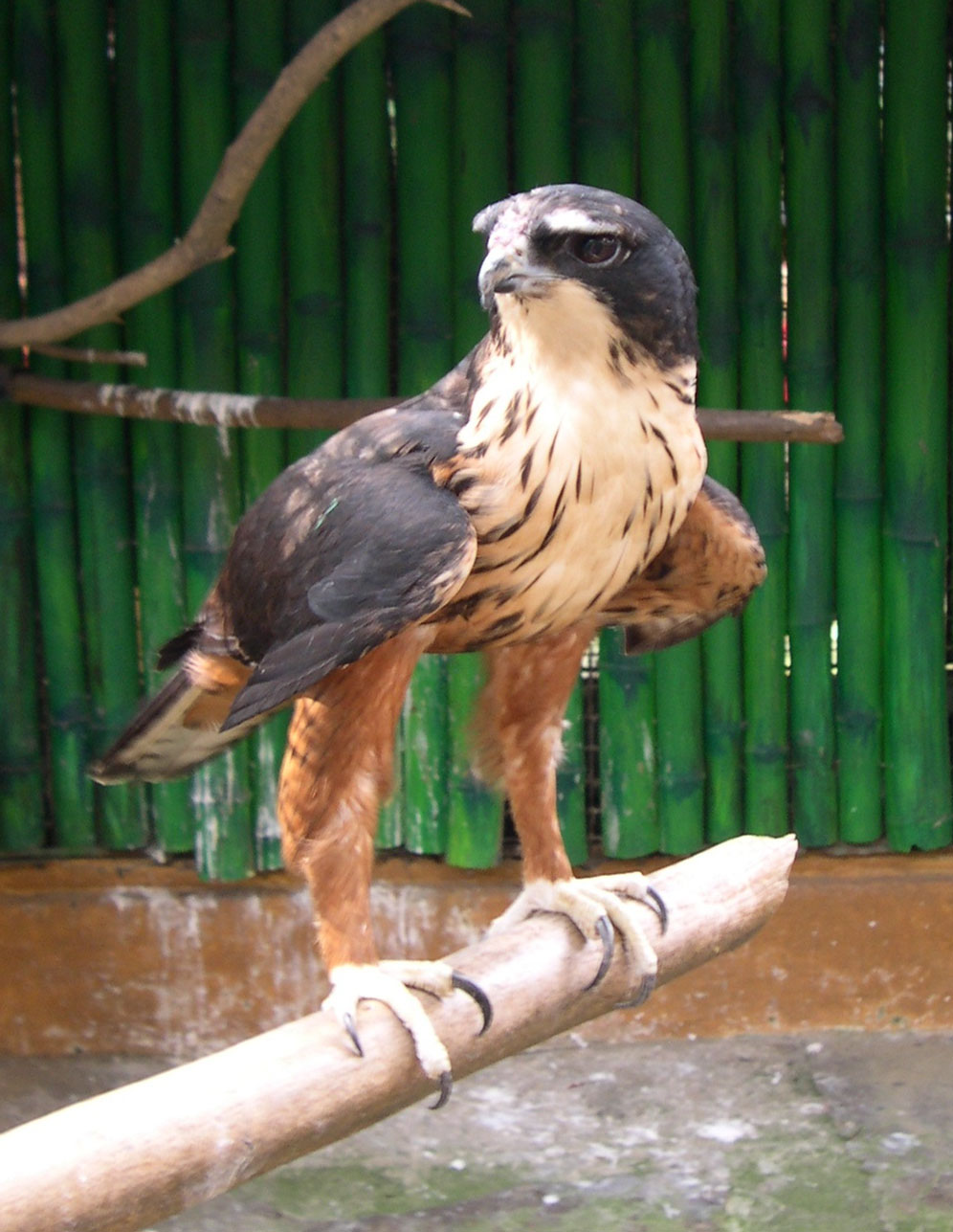- Rufous-bellied Eagle
Taxobox
name = Rufous-bellied Eagle
status = LC | status_system = IUCN3.1
status_ref = [IUCN2006|assessors=BirdLife International|year=2004|id=49461|title=Hieraaetus kienerii|downloaded=12 May 2006 Database entry includes justification for why this species is of least concern]

regnum =Animal ia
phylum = Chordata
classis = Aves
ordo =Falconiformes
familia =Accipitridae
genus = "Aquila"
species = "A. kienerii"
binomial = "Aquila kienerii"
binomial_authority = (Geoffroy Saint-Hilaire,I,1835 )
synonyms =
*"Hieraaetus kienerii"cite journal |last=Lerner |first=H. R. L. |coauthors=D. P. Mindell |year=2005 |title=Phylogeny of eagles, Old World vultures, and other Accipitridae based on nuclear and mitochondrial DNA |journal=Molecular Phylogenetics and Evolution |issue=37 |pages=327–346 |doi=10.1016/j.ympev.2005.04.010 |volume=37 ]Rufous-bellied Eagle, ("Aquila kienerii"), is a
bird of prey in the family Accipitridae, which also includes thebuzzard s,hawk s andOld World vulture s. It was earlier placed under the genus "Hieraaetus" but this eagle may well belong to a separate genus. The name of "Kienastur" has been suggested. [Jan Ove Gjershaug (2006) Taxonomy and conservation status of hawk-eagles (genus Nisaetus) in South-East Asia. Thesis. Norwegian University of Science and Technology [http://www.diva-portal.org/ntnu/abstract.xsql?dbid=413 Fulltext] ]Rufous-bellied Eagles breeds in tropical
Asia . It is resident inSri Lanka , southwest and northernIndia , and east to southeast Asia andIndonesia .This species is associated with woodland. The large stick nest is built in a tree and a single egg is laid.
Rufous-bellied Eagles are smallish
eagles , 54-60 cm long. It has broad rounded wings, held flat while soaring, and a short broad tail. It eats mainlybird s and smallmammal s.The adult has blackish upperparts and head. The foreneck and breast are white, and the tail and flight
feather s are white barred with dark. The rest of the underparts are chestnut. Sexes are similar.The immature eagle has white in place of the adult's chestnut plumage, and dark flank patches.
References
Wikimedia Foundation. 2010.
